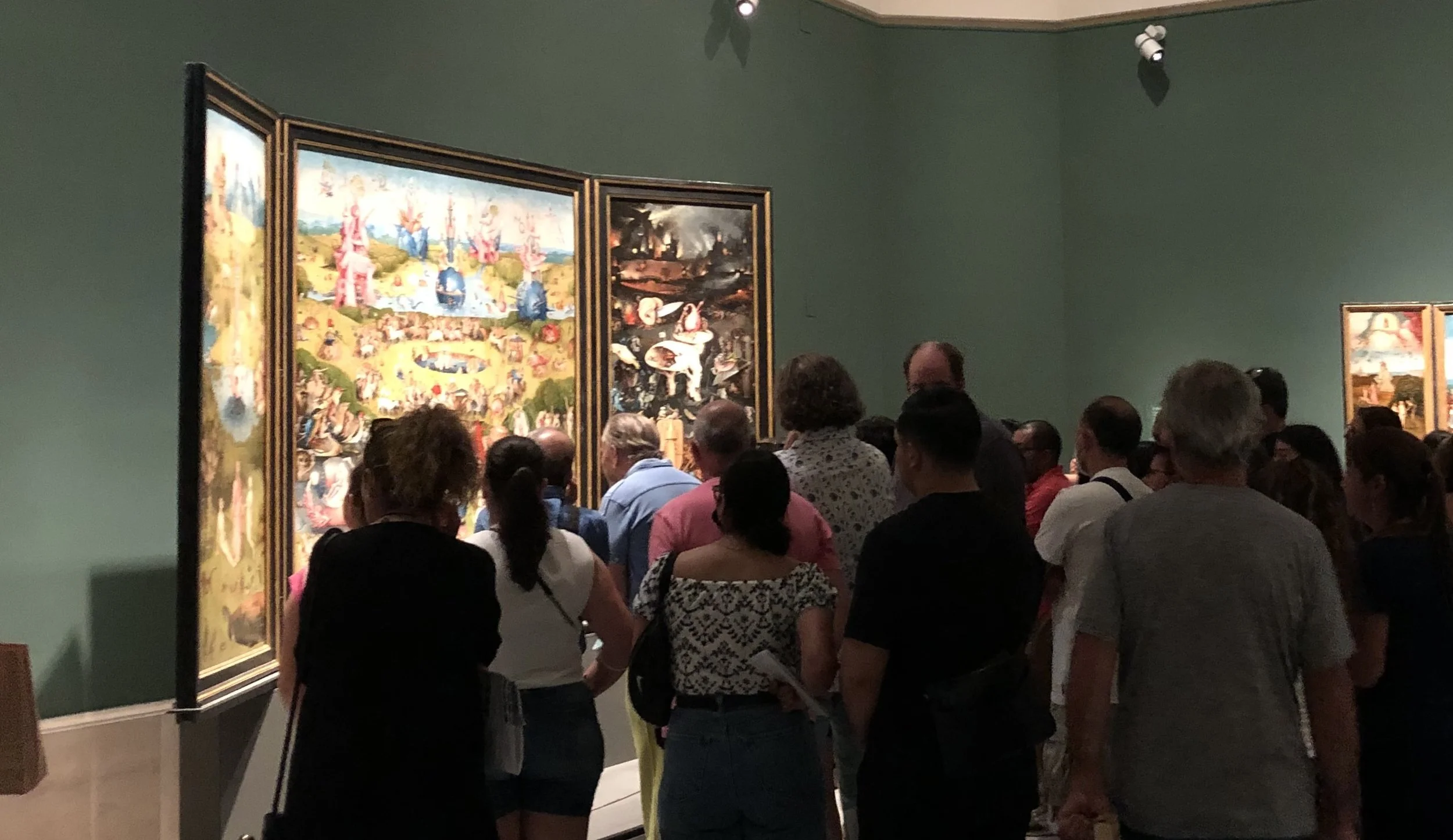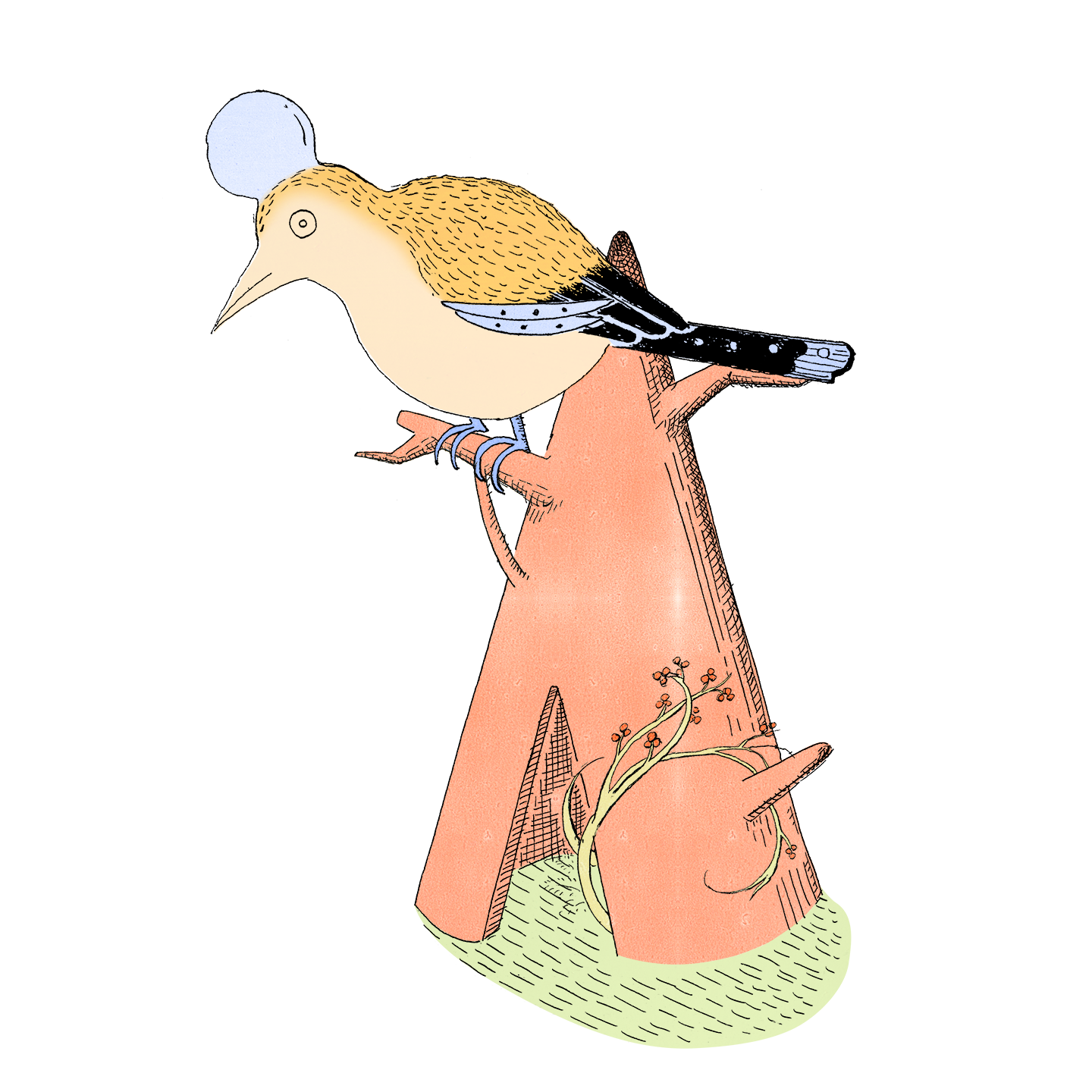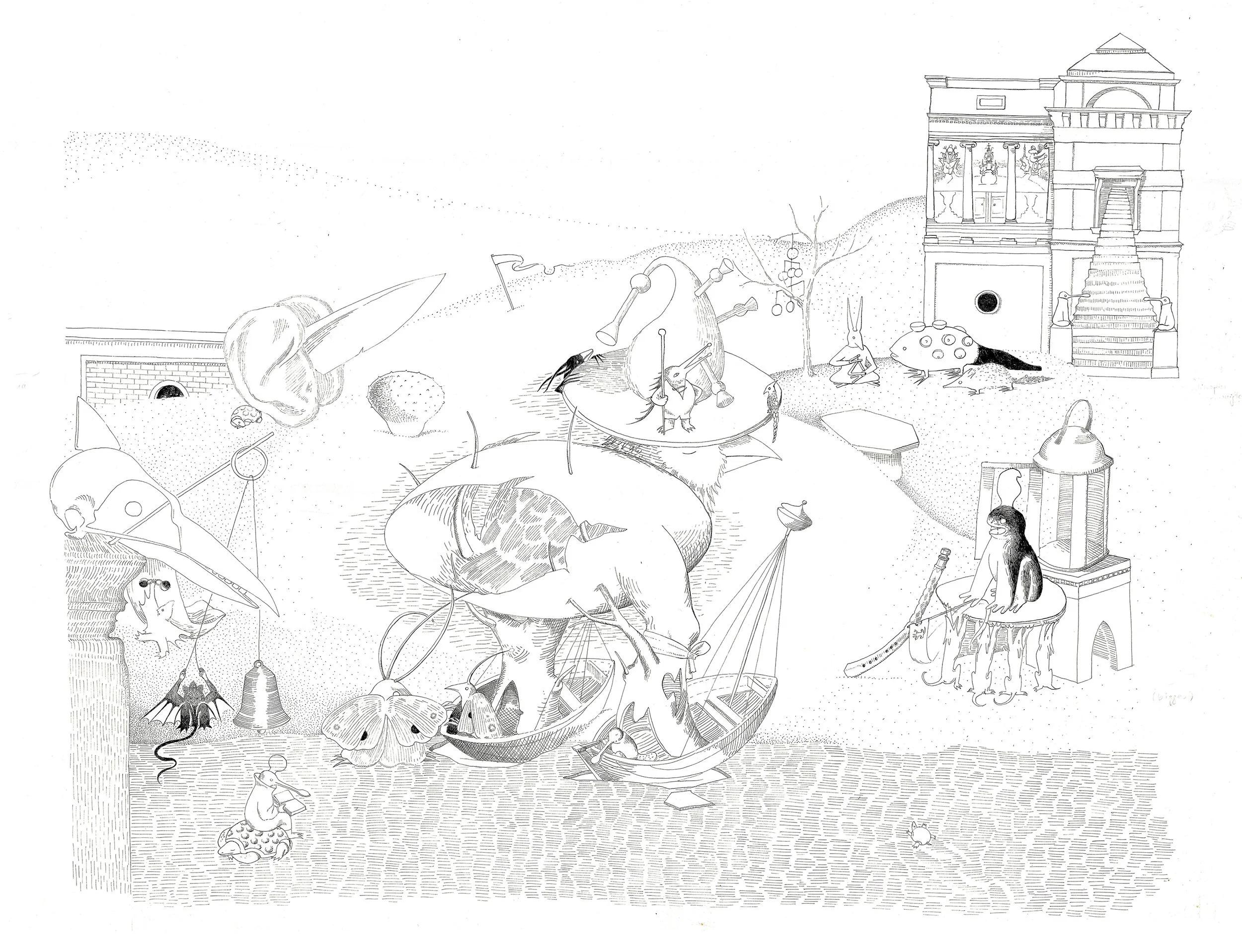Garden Creatures - Behind the Scenes
By Julia Konieczna, co-author of the concept, game art and user experience for “Garden Creatures”.
The Concept
We imagined Garden Creatures in relation to an original artwork, to help bridge the gap between historical art and the modern viewer, including young viewers, without compromising artistic integrity or sensitivity. This handcrafted digital reimagening invites interaction, contemplation, and wonder.
The Garden of Earthly Delights Hieronimous Bosch, Prado Museum
The concept was initiated and developed with our team at Well of Art. We imagined an interaction where the viewers don't just look at a painting - they enter it. We based our experience on The Garden of Earthly Delights by Hieronymus Bosch, an early Renaissance masterpiece bursting with curiosity, absurdity, and rich detail.
The Garden of Earthly Delights by Hieronymus Bosch (fragment)
Bosch’s work is suspended between two worlds - the stark moral symbolism of the medieval era, and the Renaissance spirit of exploration: a fascination with nature, invention, and the unknown.
As an illustrator and educator, I chose an approach to focus on the - you could call it - ‘Renaissance spirit’ of the painting: a love for studying nature, science and the arts.
“Garden Creatures” Level 1: Garden
The Characters
The Creatures in Bosch’s artwork are inspired by early scientific discoveries of the natural world. While they aim for a realistic representation, they also echo the spirit of medieval bestiaries, where imagination and secondhand stories often shape the final images. I drew on that tradition to create figures and worlds that invite creativity and spark the imagination.
Drawings for the Blue Bird, Owl and Hoopoe characters
The Player
The player is the only “human” figure in the interactive world (a sketch brought to life), whose task is to return color to the painting and reawaken its magic. This is not a rescue mission - it’s a slow, mindful process of discovery. To bring back color, the player must think like an artist: look closely, notice detail, and learn how things are made.
The experience is, in the end, all about exploring and studying the world around you.
The player’s character is a teenager wearing a cozy onesie - something familiar and playful, yet open to transformation. A onesie says: I feel comfortable in my surroundings. But it can also be formal, practical, or even transformative, turning the wearer into any kind of creature.
Player - sketch on his way to becoming a painting.
To give players more room to express their identity, we added a feature that lets them choose a whimsical hat inspired by Bosch’s fantastical creatures. This happens in the introductory level, set in an artist’s studio. It allows each user to blend into the world in their own unique way, supporting both personal expression and immersion in the painting’s surreal logic.
The Levels
The immersive journey loosely follows the three parts of Bosch’s triptych: the garden, fantastical hellscapes and paradise. We added a fourth area - the artist’s studio, or a “cabinet of curiosities” where the journey begins.
Intro level: Atelier
The player awakens in the artist’s atelier: a quiet, cluttered room filled with references to representations of a “cabinet of curiosities”. The blank character comes to life, stepping out of a sketch to begin the mission.
Garden Creatures Intro Level: Atelier
Cornelis de Baellieur, Gallery of Art Objects, ca. 1630-1637, Musée des Beaux-Arts
The studio is inspired by the “cabinets of curiosities” - galleries combining art with other exceptional objects, that were organized since the Renaissance by rich art collectors as well as successful artists such as Pieter Paul Rubens. Cornelis de Baellieur, a fellow painter, portrayed rooms where art was made and marveled at. In the case of Rubens, it was an environment designed to impress patrons, store treasured objects, and inspire creative thought. It was both public and personal - laboratory of the imagination.
This surreal prologue invites the player into a world where observation and imagination blur, just like in Bosch’s paintings.
Level 1: Garden
Lush and full of creatures and surprises, this is where Bosch’s visual poetry comes alive. The player helps awaken birdsong and stirs the environment into motion, creating a paradise-like setting. A completed ‘level’ of a game bursts with life, filled with sound and movement.
Levels 2-4: Hell
Inspired by the section in Bosch’s painting often referred to as The Hell of the Musicians. Our version of Bosch’s “hell” takes the form of surreal dreamscapes - strange and darkly humorous, but never truly frightening. Here, when characters are brought to life - they perform music. But their concert is a bizarre, discordant cacophony: screeching, clanging, and wildly off-key. It’s absurd, unsettling, and a little funny, creating an audiovisual artistic mess that reflects the dream-logic of the world.
Pen and Ink drawing, oil paint on paper “Garden Creatures” Level 2: Hell
Handcrafting a Digital Art Experience
The artwork for this digital re-imagining is handcrafted by two artists using a unique technique: pen and ink combined with oil painting on paper.
I designed each level by uncovering Bosch’s world from beneath crowds of 'damned souls' - the dense human figures in his painting, creating more space and preparing it to be viewed by different audience age groups.
I drew each world first in pen and ink, using fine, intricate lines - a tribute to Bosch’s obsessive attention to detail. I used pattern and cross-hatching to suggest space and texture, choosing certain elements to fill with flat black to anchor the composition and guide the viewer’s eye through this visual narrative.
Level “Atelier”, pen and ink on paper, Julia Konieczna
Level “Hell 2”, pen and ink on paper, Julia Konieczna
These drawings were digitally prepared and printed on cotton rag paper, which was mounted with canvas adhesive to thick cardboard, creating a surface suitable for oil painting. To complete the artwork, Robert Latoś applied color using classical oil painting techniques, as used by Bosch himself, creating rich, vibrant surfaces that could live in the digital world.
“The way I used color served two purposes: It highlighted Julia’s compositions while also referencing Bosch’s ornamental, almost symbolic use of paint. Creating an image meant for screens, not for walls, where colors shift and parts move was a surprising and engaging experience for a painter.”
Robert Latoś
Moving Through a Painting: How Animation, Puzzles, and Play Turn Art into Experience
Visual Dialogues
To underline the concept of discovering a world by close looking, characters communicate without words, using images and gestures. This use of visual language also creates space for interpretation and emotional connection.
I created gif dialogue bubbles to communicate tasks, successes and narratives with the player.
Puzzle
Puzzle games offer players an interactive connection with the artwork.
The player's task is to complete an image by layering semi-transparent layers of color, simulating the process of glaze oil painting - a technique used by Bosch and other Renaissance painters.
Puzzle Example: Strawberry Butterfly
These artistic processes encourage close looking and playful exploration, inviting viewers to experience how an artist sees and thinks. These are tools they can later use in painting in the Glaze App, a painting app also developed by Well of Art, teaching painting skills.
As an art teacher and museum educator, I have used these puzzles to introduce the history of paintings, basics of color theory and painting techniques.
“Garden Creatures” is an inclusive, open-ended art experience, created by artists and inspired by the imagination and visual language of a 500-year-old masterpiece.
It invites you to slow down, look closely, and rediscover art as a living, evolving world. Through hand-drawn visuals, rich color, and puzzle-based interaction, we aim to show that art isn’t distant or intimidating, but something you can explore, play with, and make your own.
The Conclusion
Whether or not players remember Bosch’s name, they’ll remember the world they wandered through, and the joy of bringing it back to life.
With the artwork animated and the puzzles in place, Garden Creatures becomes more than just a game or an artwork, but a tool for learning through interaction. This may be the final behind-the-scenes article, but the experience is still evolving, inviting new ideas, new players, and new ways of seeing, by exploring art in motion.
Julia Konieczna
Julia Konieczna is a multimedia artist, illustrator, and educator working across illustration, spatial design, game art, and interactive soft sculptures. A graduate of Cambridge School of Art, she combines imaginative storytelling with traditional art techniques. She has participated and held exhibitions in London, Shanghai, and Warsaw. She integrates art and education to foster creative thinking, play, and exploration across disciplines.
Robert Latoś
Robert Latoś – Painter and entrepreneur. Founder and CEO of Well of Art, creator and artistic director of the painting software Glaze. He studied painting at the Academy of Fine Arts in Kraków and later pursued informal studies in Venice and Cambridge. He has held solo exhibitions in Venice, Singapore, and Warsaw.


















